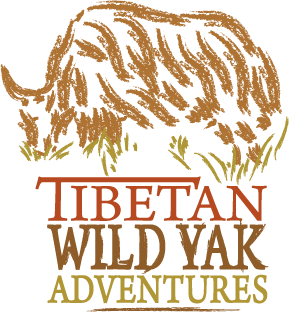| |
|
| |
|
|
Yushu/Jyekundo (Kham/Amdo?) |
|
|
If
you really want to witness Tibetan life, this would be the
place. Yushu is referred to as the town of dance and song.
Almost untouched by tourism, other than the Yushu Horse
Racing Festival, Tibetans meander along the streets doing
their shopping or trading in their traditional garb,
smiling, and content. As the traditional town of the Amdo
region, the inhabitants are mostly still Tibetan, although
many shops and businesses are now owned by Chinese.
The three world famous rivers - the
Yangtze River,
the Yellow River
and the Lancang River
- all originate from this handsome region. Here you will
find a wonderful Tibetan market tucked away behind a stream
of buildings right on the main street, near the crossroads.
There is no better place to do your shopping for traditional
Tibetan clothing, carpets, musical instruments, cloth and
even some interesting fountain-of-youth products.
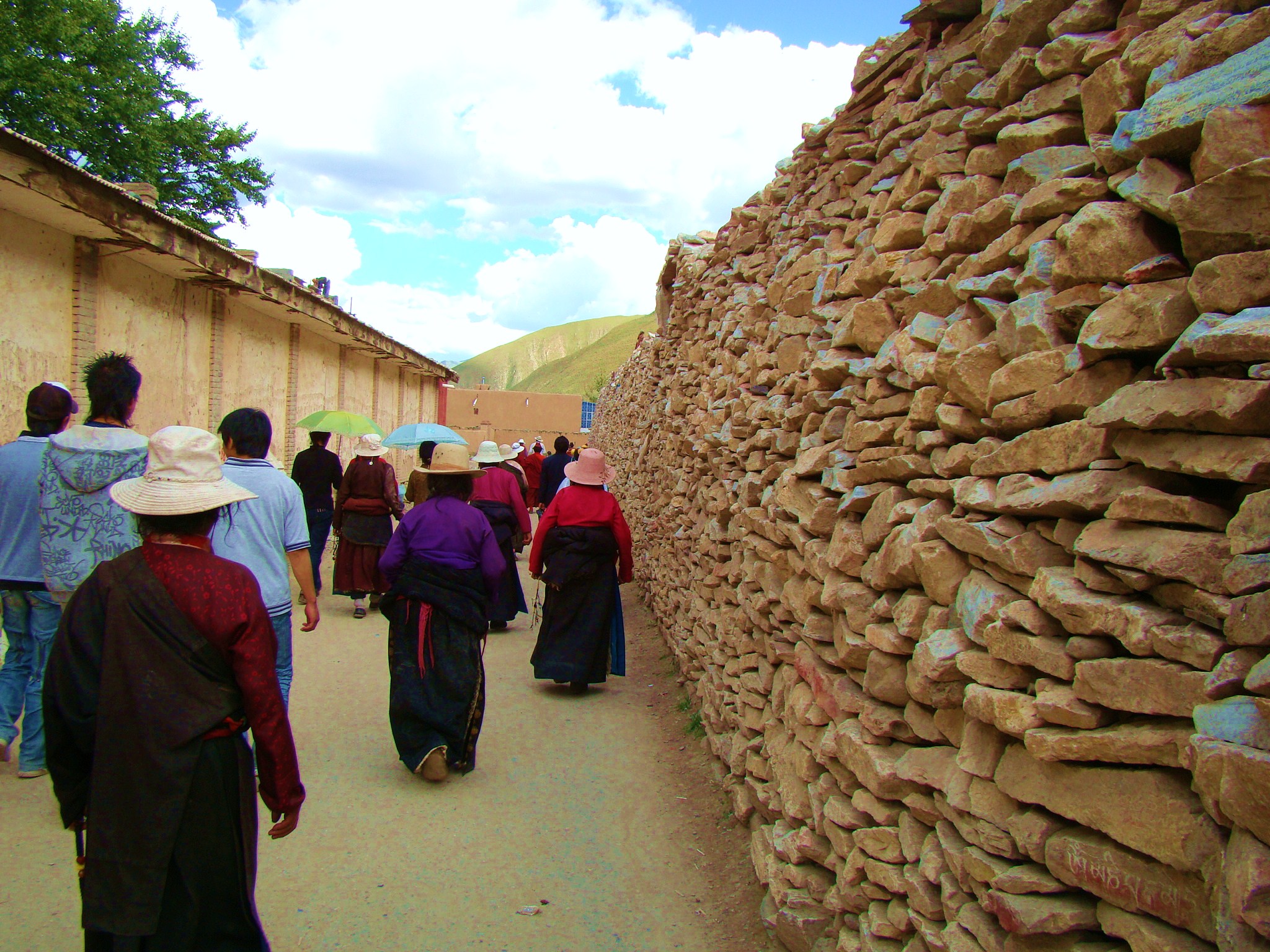 If you're into culture and
living among Tibetans, Yushu has everything you're looking
for. With some great new hotels at reasonable prices (not
during the horse-racing season) and food in various price
ranges, from cheap to ultra-cheap, you can spend a week in
Yushu just snapping photographs and checking out some
interesting local attractions. The Jiegu Monastery sets on
top of a hill overlooking the entire city. It's so
interesting to wander through the small lanes hoping to
catch a glimpse of a monk in his natural setting. Just
outside of town, easily accessed by local bus or taxi is the
largest Mani Stone stack in the world, over 1 million prayer
stones have been placed here among numerous temples and
dozens of prayer wheels of all sizes. Locals are always
doing their kora here and the photo rewards are outstanding.
Even little children are prostrating along the route...just
amazing! Also see the Temple of Wencheng Princess. If you're into culture and
living among Tibetans, Yushu has everything you're looking
for. With some great new hotels at reasonable prices (not
during the horse-racing season) and food in various price
ranges, from cheap to ultra-cheap, you can spend a week in
Yushu just snapping photographs and checking out some
interesting local attractions. The Jiegu Monastery sets on
top of a hill overlooking the entire city. It's so
interesting to wander through the small lanes hoping to
catch a glimpse of a monk in his natural setting. Just
outside of town, easily accessed by local bus or taxi is the
largest Mani Stone stack in the world, over 1 million prayer
stones have been placed here among numerous temples and
dozens of prayer wheels of all sizes. Locals are always
doing their kora here and the photo rewards are outstanding.
Even little children are prostrating along the route...just
amazing! Also see the Temple of Wencheng Princess.
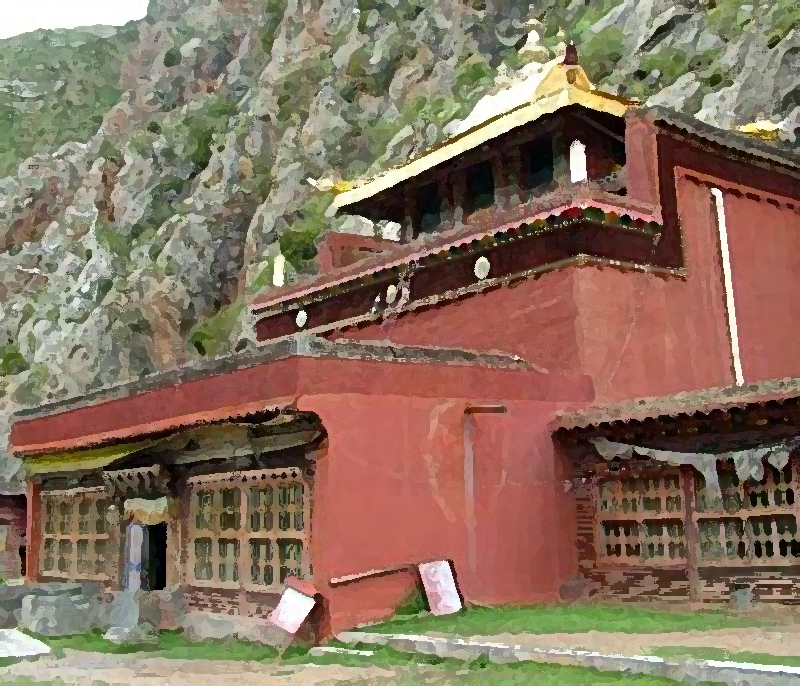 Located
20 kilometers from Jiegu Town of Yushu Prefecture, the
Temple of Princess Wencheng is hemmed in by mountains and
streams. It is exquisitely designed with intricate detail.
On top of the rock over the front gate of the main hall
there are nine statues of Buddha, displaying the excellent
carving and painting. Princess Wencheng was emotional moved
by the hospitable and friendly local Tibetans. She thus
asked her artisans and craftsmen to build Buddhist pagodas
and make statues of Buddha. In 710 when she passed through
the same place on her way to marry the Tibetan king Chide
Zugdan, Princess Jincheng saw the statues of Buddha, naming
the structure the Temple of Princess Wencheng. Located
20 kilometers from Jiegu Town of Yushu Prefecture, the
Temple of Princess Wencheng is hemmed in by mountains and
streams. It is exquisitely designed with intricate detail.
On top of the rock over the front gate of the main hall
there are nine statues of Buddha, displaying the excellent
carving and painting. Princess Wencheng was emotional moved
by the hospitable and friendly local Tibetans. She thus
asked her artisans and craftsmen to build Buddhist pagodas
and make statues of Buddha. In 710 when she passed through
the same place on her way to marry the Tibetan king Chide
Zugdan, Princess Jincheng saw the statues of Buddha, naming
the structure the Temple of Princess Wencheng.
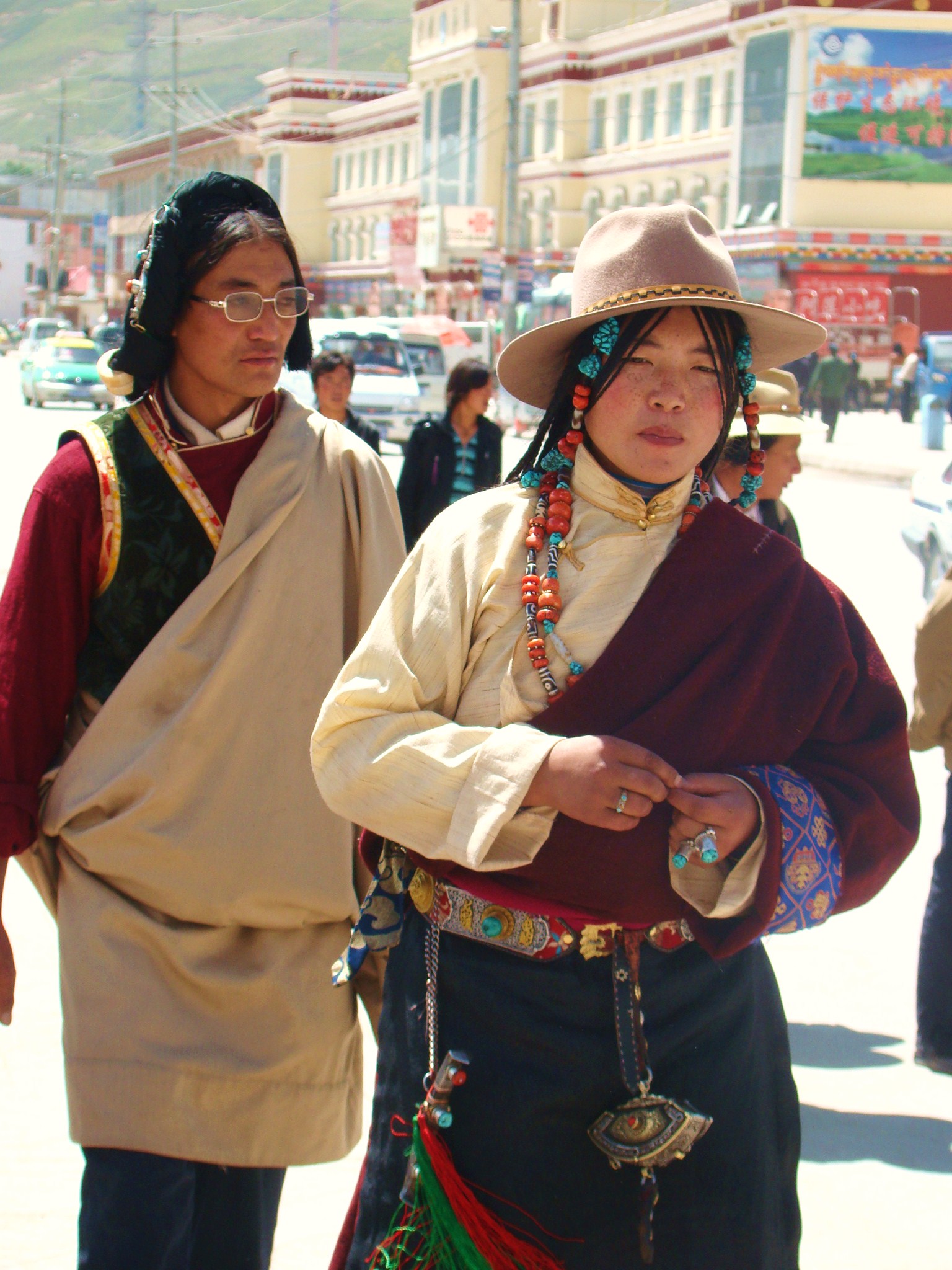 Not only is Yushu
fascinating as a city, the surrounding snow-capped
mountains, glaciers, lakes, grasslands make this place too
good to be true. With a good guide you should be able to see
wild yak, Tibetan antelope, argali, wild donkey, wild camel,
golden eagles, and many many birds. You likely won't see the
snow leopard, but it's there among the craggy cliffs,
watching. At an altitude of 5300 meters, everyone can enjoy
this pleasant area without shortness of breath. About 800
kilometers from Xining
in Qinghai Province, the vista along the route, whether
by bus or car, is truly the most breathtaking in Tibet. Not only is Yushu
fascinating as a city, the surrounding snow-capped
mountains, glaciers, lakes, grasslands make this place too
good to be true. With a good guide you should be able to see
wild yak, Tibetan antelope, argali, wild donkey, wild camel,
golden eagles, and many many birds. You likely won't see the
snow leopard, but it's there among the craggy cliffs,
watching. At an altitude of 5300 meters, everyone can enjoy
this pleasant area without shortness of breath. About 800
kilometers from Xining
in Qinghai Province, the vista along the route, whether
by bus or car, is truly the most breathtaking in Tibet.
If you want everything, plan
your Yushu trip during July when they have the
Yushu Horse Racing Festival, but
book well in advance. Your guide can arrange a stay in a
tent with the locals during the festival, but book well in
advance. This event is world-famous!
|
|
|
|
|
Zadou |
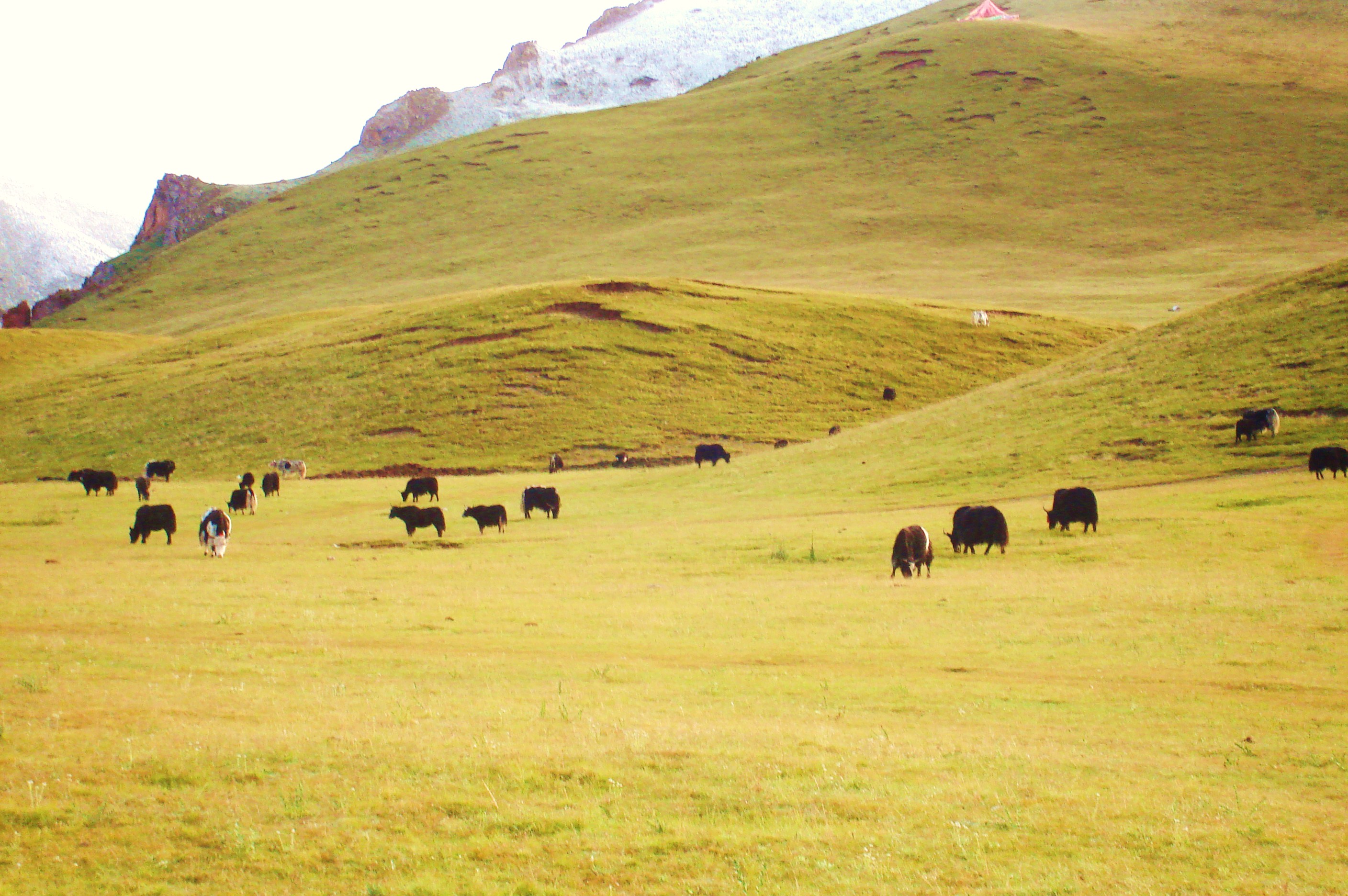 Another five hours from the
city of Yushu is Zadou, a small but very interesting town
situated along a beautiful lazy river with a backdrop of
huge mountains. The people here are mostly Tibetan. Unlike
other cities, not every business here is owned by Chinese. Lots
of nomads linger around the streets of Zadou to buy their
supplies and entertain themselves with card games. The busy
streets have so much Tibetan charm, the women in their
cultural garb, the men with big welcoming smiles, and the
young people riding their motor bikes. For many here, they
have made a decent living picking "SHILAJIT" on these grasslands for the past few years. The
stuff is used in preparations for "eternal youth" skin
care and supplement products and sold around the world. Sadly, the fad
seems to be waning. But with a little extra money in their
pockets these nomadic folks have purchased televisions and
solar panels for their tents, motorcycles and even some Land
Rovers! Another five hours from the
city of Yushu is Zadou, a small but very interesting town
situated along a beautiful lazy river with a backdrop of
huge mountains. The people here are mostly Tibetan. Unlike
other cities, not every business here is owned by Chinese. Lots
of nomads linger around the streets of Zadou to buy their
supplies and entertain themselves with card games. The busy
streets have so much Tibetan charm, the women in their
cultural garb, the men with big welcoming smiles, and the
young people riding their motor bikes. For many here, they
have made a decent living picking "SHILAJIT" on these grasslands for the past few years. The
stuff is used in preparations for "eternal youth" skin
care and supplement products and sold around the world. Sadly, the fad
seems to be waning. But with a little extra money in their
pockets these nomadic folks have purchased televisions and
solar panels for their tents, motorcycles and even some Land
Rovers!
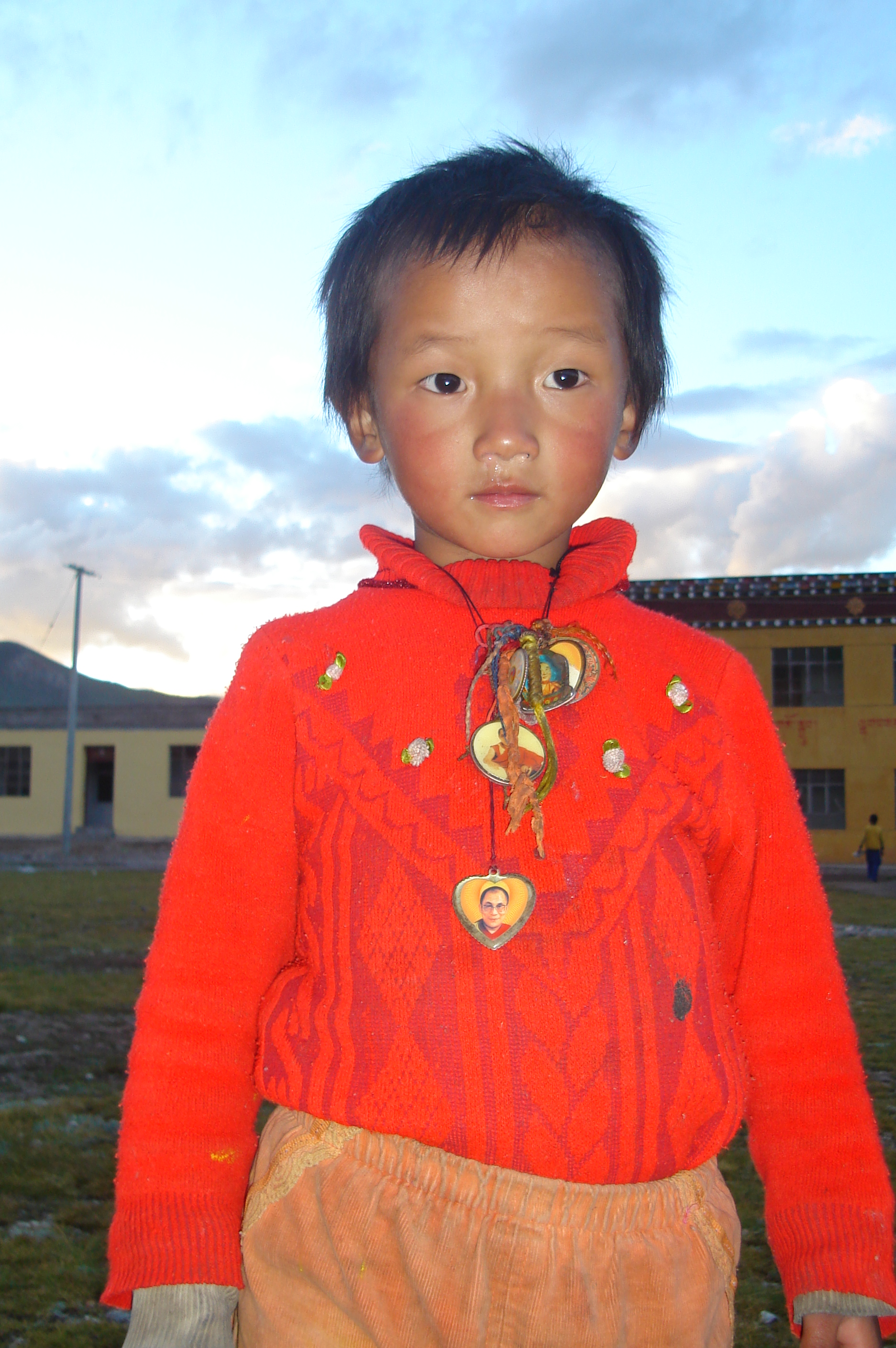 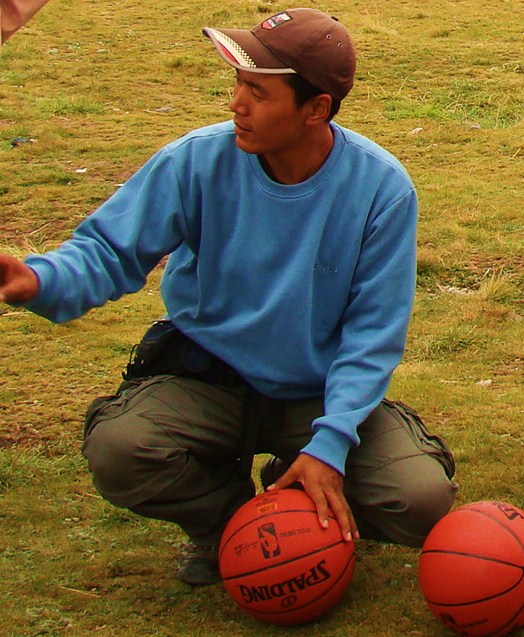 If
you want to work in an orphanage there is the Warithang
Orphanage here in the middle of the grasslands, twenty hours
from any "city" with 108+ children who would love to see
you. Ask for the "lama" in town, he owns the orphanage and
is always looking for volunteers and donors for his good
works. Or write to Kalsang. He can
contact the lama. Be sure to take a few basketballs if you go to visit
the orphans. You can find a guesthouse by asking around or
possible stay at the orphanage if you can deal with no
electricity, no running water, no bathrooms, etc. You
can learn more about this orphanage by visiting:
www.warithangorphanage.org If
you want to work in an orphanage there is the Warithang
Orphanage here in the middle of the grasslands, twenty hours
from any "city" with 108+ children who would love to see
you. Ask for the "lama" in town, he owns the orphanage and
is always looking for volunteers and donors for his good
works. Or write to Kalsang. He can
contact the lama. Be sure to take a few basketballs if you go to visit
the orphans. You can find a guesthouse by asking around or
possible stay at the orphanage if you can deal with no
electricity, no running water, no bathrooms, etc. You
can learn more about this orphanage by visiting:
www.warithangorphanage.org
more Tibetan
orphanages. Also try
www.orphanagesworldwide.com
|
|
|
|
|
Dege |
|
|
Dege, in Kardze (GarzÍ Ganzi Gantse),
traditionally part of the Tibetan region known as Kham, currently a Tibetan Autonomous Prefecture in western Sichuan Province, is
located on the southwestern edge of the Qinghai-Tibet Plateau, on the upper
reaches of the Jinsha and Yalong rivers.
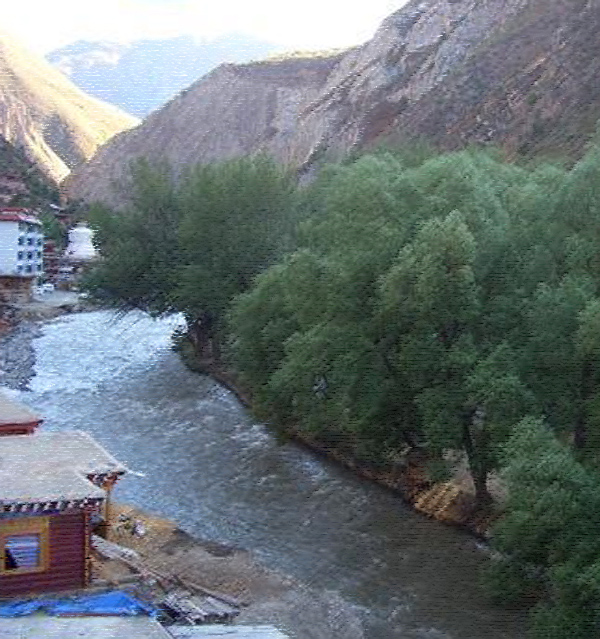 The
TAR is west. Dege meaning "land of benevolence" is derived from "ten
benevolences of the "Four Orders" of Tibetan Buddhism, named after the Dege
clan. Five main sects of Tibetan Buddhism, Nyingmapa (Red), Saturdaykyapa
(Variegated), Kagyupa (White), Gelukpa (Yellow) and Benbo were treated equally
by the Dege clan, and conflicts among these schools of religious thought were
rare in Dege. Ancient tolerance! What wisdom! Dege is one of three ancient centers
of Tibetan culture, together with Lhasa and the city of Xiahe in Gansu. In the 17th and 18th centuries, the influence of the Dege clan covered
several counties of current Sichuan, TAR and Qinghai.
Around the Dege area are Yilhun Lhatso, Axu
grassland, Kagtru Temple, Palpungl Monastery, Pewer Monastery and Dege Scripture Printing House. The
TAR is west. Dege meaning "land of benevolence" is derived from "ten
benevolences of the "Four Orders" of Tibetan Buddhism, named after the Dege
clan. Five main sects of Tibetan Buddhism, Nyingmapa (Red), Saturdaykyapa
(Variegated), Kagyupa (White), Gelukpa (Yellow) and Benbo were treated equally
by the Dege clan, and conflicts among these schools of religious thought were
rare in Dege. Ancient tolerance! What wisdom! Dege is one of three ancient centers
of Tibetan culture, together with Lhasa and the city of Xiahe in Gansu. In the 17th and 18th centuries, the influence of the Dege clan covered
several counties of current Sichuan, TAR and Qinghai.
Around the Dege area are Yilhun Lhatso, Axu
grassland, Kagtru Temple, Palpungl Monastery, Pewer Monastery and Dege Scripture Printing House.
Gengqing Town
The town of Gengqing, just on the reaches of the Sequ River is 500 years old, and
is now the county seat of Dege. The town is a holy site in Tibetan Buddhism
because of the printing house for turning out scriptures with unique paper, and
as well as the epic of King Gesar. The foundation for the printing house was laid in 1729, and construction took
21 years. It is located in the Gengqing monastery. The main structure is a four-story building with more than 30 rooms.
The first floor consists of several sutra halls where Buddha and the ancestors
of the Dege clan are worshipped. The second and third floors have rooms for
proofreading, engraving blocks, printing and binding, and some administrative
offices. The fourth floor is used to air dry the printed pages.
Derge Sutra Printing Academy
Amazingly, the Derge Scripture Printing House' has 217,000 engraved blocks in its
archives, including classics from different sects of Tibetan Buddhism. It is
the treasury of Tibetan culture and arts. Kept here are more than 290,000
engraved blocks of religious documents including classics from different sects
of Tibetan Buddhism, historical, literature and art, medical, technological,
scientific, linguistic, astronomical and arithmetical-calendar books in Tibetan.
The special paper for printing is made from Stellera
chamaejasme - L. , a medicinal plant found on stony
slopes and plains of the Himalayas at 2700 - 4300 meters. The root is toxic so
the paper repels mice and moths, and keeps them from damaging the books.
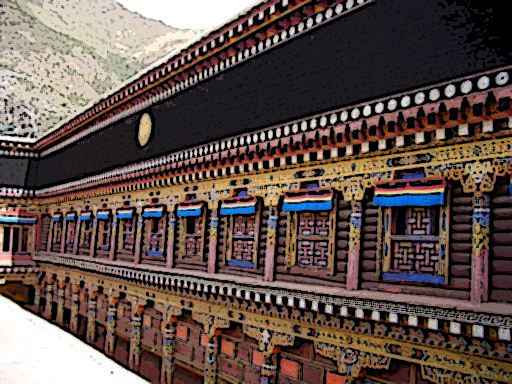 Derge
academy is the largest of three big Sutra-printing academies in Tibetan
regions. It is
estimated that materials stored at Dege make up seventy percent of Tibet's literary
heritage, what is left of it after the Cultural Revolution destroyed over 6000
of its monasteries, many with loads of ancient scrolls. Because of its role in preserving Tibetan culture, Dege ranks together
with the Sakya Monastery and the Potala Palace in Lhasa in historic and cultural
significance. Derge
academy is the largest of three big Sutra-printing academies in Tibetan
regions. It is
estimated that materials stored at Dege make up seventy percent of Tibet's literary
heritage, what is left of it after the Cultural Revolution destroyed over 6000
of its monasteries, many with loads of ancient scrolls. Because of its role in preserving Tibetan culture, Dege ranks together
with the Sakya Monastery and the Potala Palace in Lhasa in historic and cultural
significance.
The printing blocks preserved at the Dege Scripture Printing House include
those from Gagyur and Danjur (engraved in the 18th century);
historical classics such as The History of Buddhism of the Han Inhabited
Regions and The History of Indian Buddhism (a text which cannot even
be found in India any longer); medical classics such as Sapphire, A
Collection of Medical Works; ancient mathematical texts such as White
Gem; literary and linguistic classics such as Models of Poetry and Logic;
and the memoirs of Tibetan monks from various dynasties. During this century parts of these works have been reprinted in China, Japan, Russia and India,
providing important research materials on Tibetan studies.
Kagtru Temple
Kagtuo Temple was built in 1162 and is located in present-day Baiyu County.
It belonged to the Dege clan and is still one of the six major temples of the
Ningma Sect. Affiliated temples. Other well-known temples in the Dege area include Babang Temple
and Dengqing Temple, the latter being more than 1,000 years old.
Birth Place of Gesar King & Axu (Ngaxu)
Grassland
Gesar was the ruler of eastern Tibet in the 11th centry.
Gesar is known as greatest hero in the Khampa area by
Tibetans, Mongolians, Naxi and Tus. He wrote one of the
greatest works of literature in the world, the epic "King of
Gesar", which is twenty times the length of the Homer's The
Illiad. The Potala Palace has a statue of Gesar for pilgrim
worship. The Axu (Ngaxu) grassland is believed to be the
birthplace of Gesar and his famous epic. The grassland
covers 800 square kilometers and has beautiful wooded hills
all around, with a spectacular river running through it.
There is a huge memorial statue of King Gesar riding a horse
in the hall of the temple constructed on this grassland
area. In the Khampa area, especially in the Ganzi area,
stories, songs and dances about Gesar are still alive and
well among the hundreds of professional Tibetan singers,
dancers and storytellers in the TAR, Qinghai, Gansu, Sichuan
and Yunnan areas. For weddings and birthday celebrations
balladeers are invited to sing Gesar, with even the shorter
pieces lasting for hours (longer versions last several days!). Obviously, a
balladeer needs an exceptional memory to recite scores of
chapters for hours, even days on end. The Lingcanc, clan, who
refer to
themselves as descendants of Gesar, have been living, in this area for several
centuries. This is a good time to visit Dege, if it is open to visitors.
Everything under Chinese rule is changing rapidly.
|
|
|
|
|
CHAMDO (Kham area of Tibet) |
|
Located in the eastern area of
Tibet, Chamdo is the mother of the Jinsha, Lancang and Nu
Rivers. Unending mountain ranges blanket this area of
108,600 square kilometers (26,835.621 acres).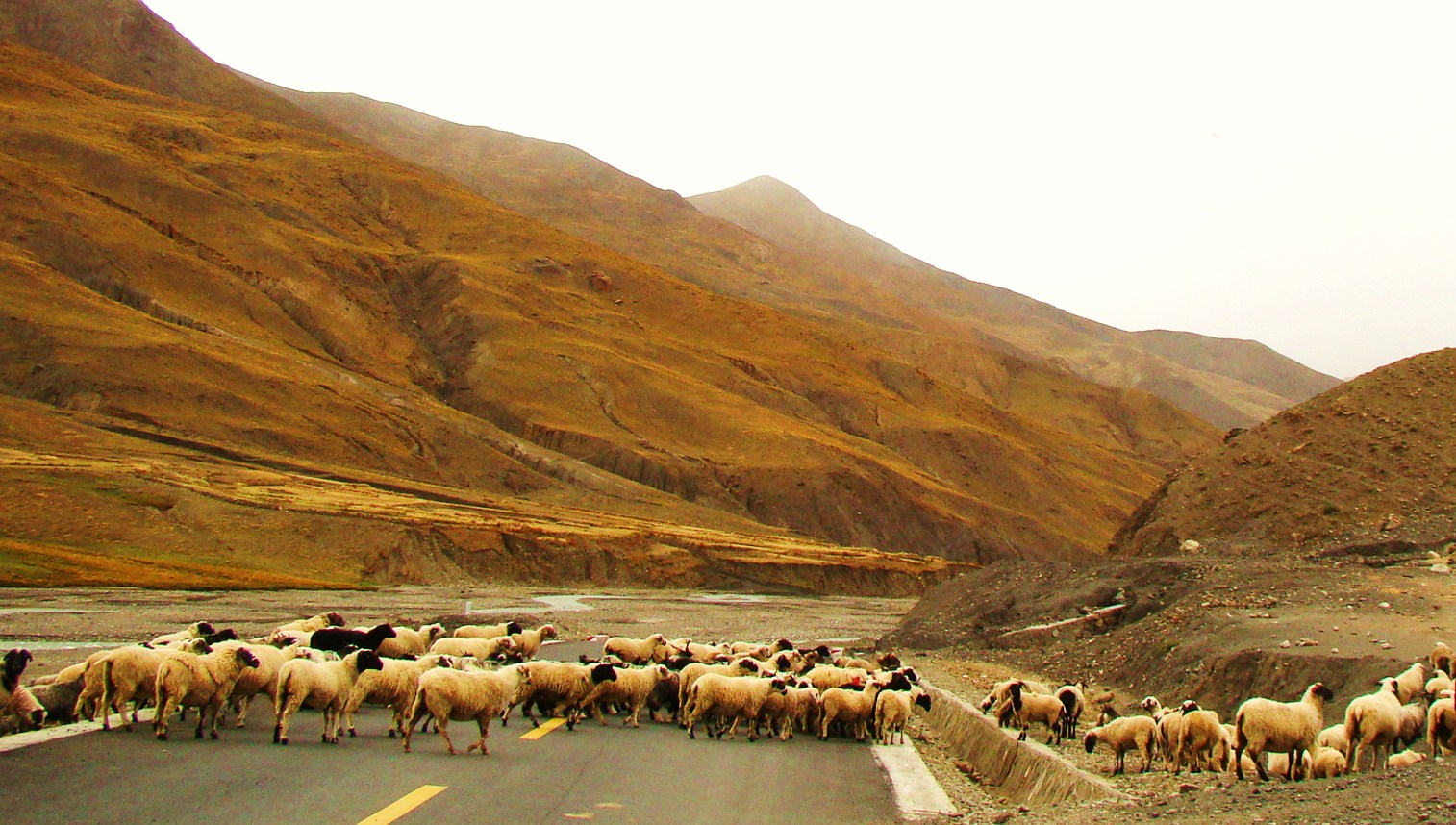 From discoveries it is known that people lived in this
region over 5000 years ago. The area was unified under
Songtsen Gampo and became part of the Tubo empire and has
been referred to as the Kham region for many years. The
Tibetan inhabitants of this area are referred to as Khampas. To the
east is Sichuan Province, to the north is Qinghai, to the
south and southeast is Yunnan Province and the country of
Burma. Home to some of the wildest wildlife and most exotic
culture, Chamdo region is fascinating. The vast and lush
grasslands, the gentle mountain slopes, and the endless
forests give visitors a feeling of spiritual rapture found
no where else on the planet. The diverse cultural traditions
of the area can be seen in the Gama ancient temple sites
like Chama and the salt fields of the Lancang River. The
colorful apparel seems to change with each village, always
brighter and fuller. The hospitality of the Chamdo girls and
the wide welcoming smiles of the Kang-ba gentlemen make
visitors feel like putting down roots along these roads. The
Ancient Tea House Road (the southern portion of the old Silk
Road) run through Chamdo. Visitors adore the unique and very
delicate gold and silver vessels made here, but best of all
they love the traditional dance and song. For hundreds of
years Chamdo has been as isolated place, only recently
accessible to the outside world by a network of highways and
an airport.
From discoveries it is known that people lived in this
region over 5000 years ago. The area was unified under
Songtsen Gampo and became part of the Tubo empire and has
been referred to as the Kham region for many years. The
Tibetan inhabitants of this area are referred to as Khampas. To the
east is Sichuan Province, to the north is Qinghai, to the
south and southeast is Yunnan Province and the country of
Burma. Home to some of the wildest wildlife and most exotic
culture, Chamdo region is fascinating. The vast and lush
grasslands, the gentle mountain slopes, and the endless
forests give visitors a feeling of spiritual rapture found
no where else on the planet. The diverse cultural traditions
of the area can be seen in the Gama ancient temple sites
like Chama and the salt fields of the Lancang River. The
colorful apparel seems to change with each village, always
brighter and fuller. The hospitality of the Chamdo girls and
the wide welcoming smiles of the Kang-ba gentlemen make
visitors feel like putting down roots along these roads. The
Ancient Tea House Road (the southern portion of the old Silk
Road) run through Chamdo. Visitors adore the unique and very
delicate gold and silver vessels made here, but best of all
they love the traditional dance and song. For hundreds of
years Chamdo has been as isolated place, only recently
accessible to the outside world by a network of highways and
an airport.
Chamdo Town is located off the
Chuanzang Highway that connect Sichuan and Tibet. There are
two amazing rivers that run right through the town dividing
it gracefully into four sections. Try the hot springs in the
area for the curative powers.
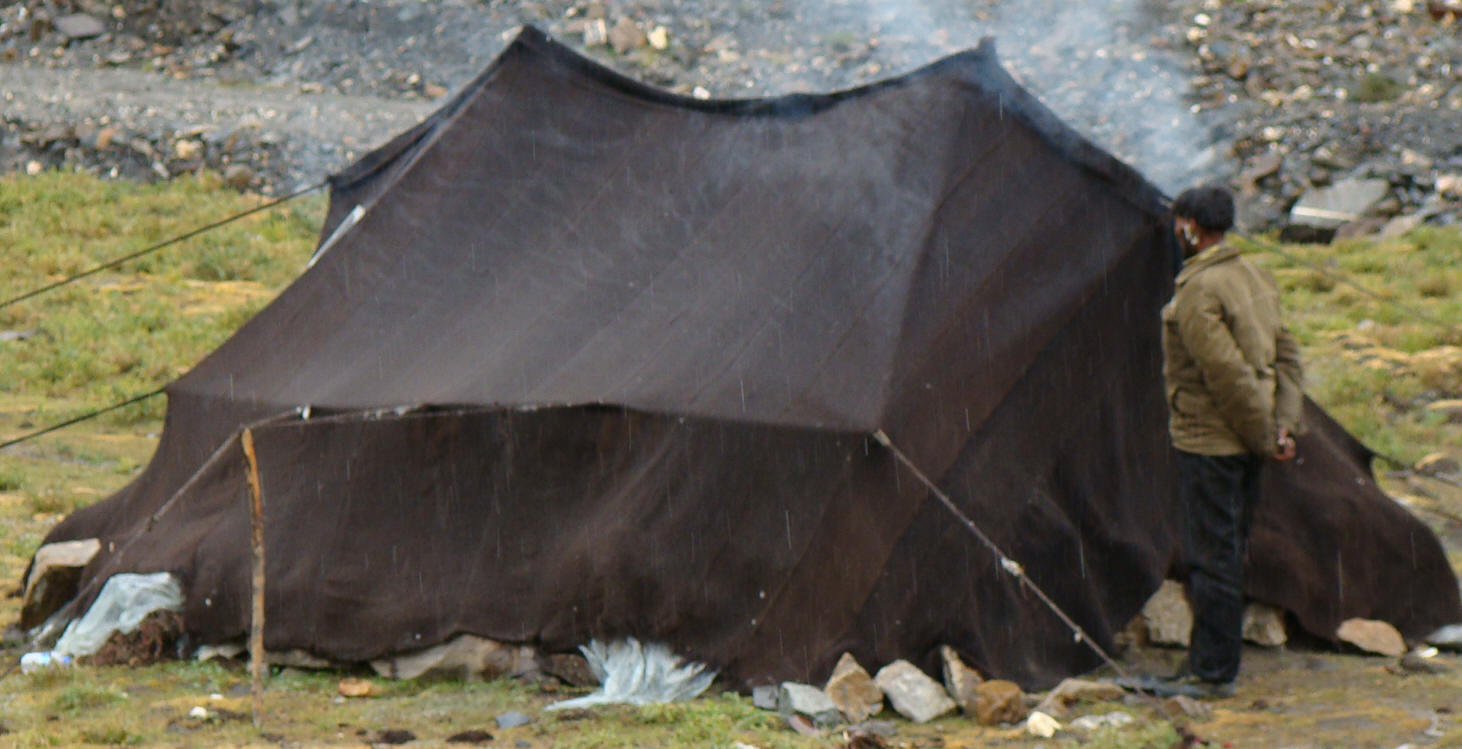 You
will be able to view a few ancient monasteries, murals, and
sculptures in the area. The town of Chamdo has a Chinese population of about 95%, according to
eyewitnesses. Some towns in Kham did not exist before the arrival of the Chinese
in the 1950s. One such is Hongyuan, which has been built in the middle of vast
grasslands previously inhabited only by nomads. With Tibetan
Buddhism serious about the human connection to all sentient
beings, the Tibetan people here seek to live a peaceful
life. Although infrastructure is seen by some as
advantageous, these people long have wished to live in what
was once a self-imposed solitude, having no desire for
commercial substance, knowing this life is just a transitory
stay between lives. Even today most Tibetans will not kill a
spider, nor a mouse, but will gently remove them to the
outdoors. Even flies are gently caught in the hand and
released. What once was Shangri-La is Shangri-La no more,
but even as cement and steel go up around them they try with
all their might to adhere to their traditions and accept
change. Come meet them before it's too late. You
will be able to view a few ancient monasteries, murals, and
sculptures in the area. The town of Chamdo has a Chinese population of about 95%, according to
eyewitnesses. Some towns in Kham did not exist before the arrival of the Chinese
in the 1950s. One such is Hongyuan, which has been built in the middle of vast
grasslands previously inhabited only by nomads. With Tibetan
Buddhism serious about the human connection to all sentient
beings, the Tibetan people here seek to live a peaceful
life. Although infrastructure is seen by some as
advantageous, these people long have wished to live in what
was once a self-imposed solitude, having no desire for
commercial substance, knowing this life is just a transitory
stay between lives. Even today most Tibetans will not kill a
spider, nor a mouse, but will gently remove them to the
outdoors. Even flies are gently caught in the hand and
released. What once was Shangri-La is Shangri-La no more,
but even as cement and steel go up around them they try with
all their might to adhere to their traditions and accept
change. Come meet them before it's too late.
|
| |
|
|
|
|
|
